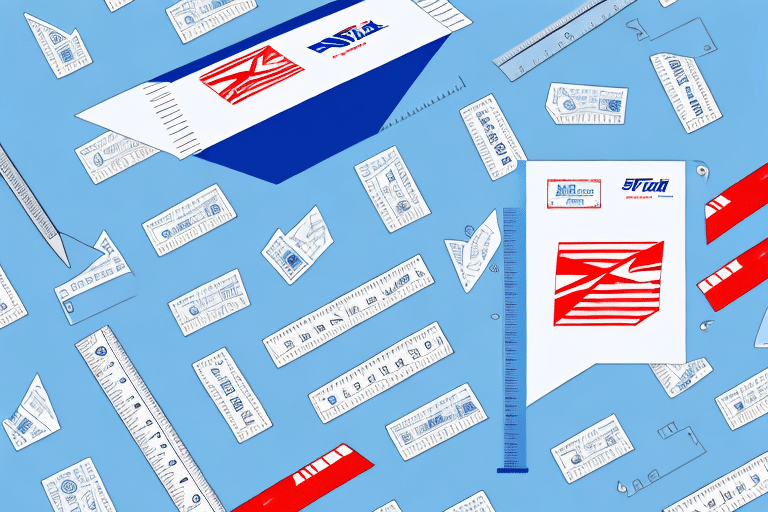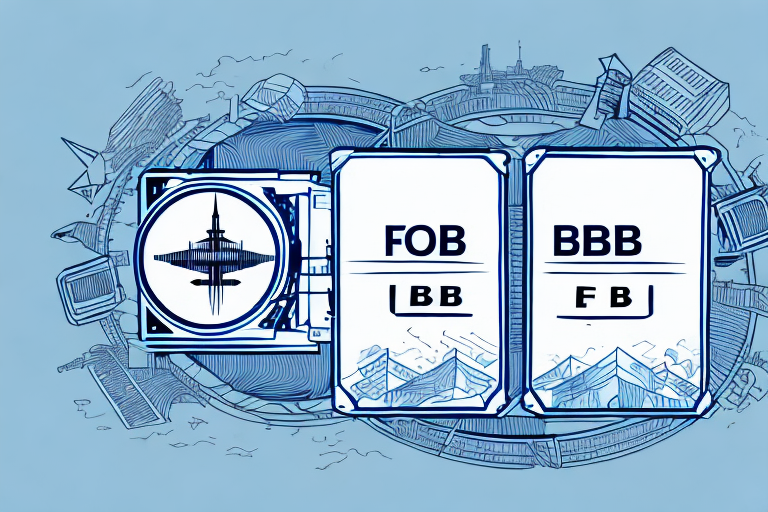Understanding How USPS Charges by Weight and Size
If you are an online seller or buyer, it's essential to understand how the USPS calculates shipping costs based on weight and size. Being knowledgeable about this can help you avoid unexpected shipping fees and choose the most affordable shipping option for your needs. In this article, we'll explore the intricacies of USPS shipping and provide useful tips to save money on shipping costs.
How USPS Calculates Shipping Costs Based on Weight
Weight is one of the most critical factors that determine USPS shipping rates. The general rule is that the heavier the package, the higher the shipping rate. The postal service uses a tiered pricing system based on weight to determine shipping fees. USPS divides packages into different classes, each with its own weight limit and pricing structure.
For packages weighing below one pound, USPS offers First-Class Mail, which is the cheapest and most popular option for small businesses and individuals. For packages weighing over one pound, USPS offers Priority Mail, which is faster but more expensive than First-Class Mail. Priority Mail also comes with free tracking and insurance up to $50.
It's important to note that USPS also offers Flat Rate shipping options, which can be a cost-effective choice for heavier packages. With Flat Rate shipping, the price is determined by the size of the box rather than the weight of the package. This means that you can ship a heavy item in a small Flat Rate box and pay the same price as shipping a lighter item in the same box.
Another factor that can affect USPS shipping costs is the destination of the package. USPS offers different pricing for domestic and international shipping, with international shipping typically being more expensive due to additional customs and handling fees. It's important to consider these factors when choosing a shipping option and calculating the total cost of shipping for your business or personal needs.
How USPS Calculates Shipping Costs Based on Size
Size is another essential factor that USPS considers when calculating shipping costs. The postal service uses dimensional weight to determine shipping rates for packages that weigh less than 20 pounds but have excessive dimensions.
Dimensional weight is a calculation that uses the size of the package to estimate its weight. The formula for dimensional weight is length x width x height divided by a dimensional factor. The dimension factor depends on the shipping class and is set by the USPS. If a package's actual weight is less than its dimensional weight, the postal service will charge based on dimensional weight instead.
It's important to note that USPS also offers Flat Rate shipping options that can be a cost-effective choice for certain packages. With Flat Rate shipping, the price is determined by the size of the box rather than the weight or distance traveled. This can be a great option for heavier items that fit in a smaller box or for shipping to a nearby location. However, it's important to compare the cost of Flat Rate shipping to other options to ensure you're getting the best deal for your specific package.
The Differences Between Parcel Post and Priority Mail Shipping
Parcel Post and Priority Mail are two popular USPS shipping options that differ in speed, pricing, and delivery time. Parcel Post, also known as Standard Post, is the most affordable USPS shipping option for packages weighing over one pound and can take up to 9 business days for delivery. Priority Mail, on the other hand, is more expensive but faster, with a delivery time of 1-3 business days.
Another key difference between Parcel Post and Priority Mail is the level of tracking and insurance provided. Priority Mail includes $50 of insurance coverage and free tracking, while Parcel Post only includes tracking and insurance for an additional fee. This means that Priority Mail is a better option for valuable or time-sensitive packages that require extra security and tracking.
Understanding the Impact of Dimensional Weight on Shipping Costs
To avoid paying higher shipping fees, it's crucial to measure your package accurately and calculate its dimensional weight. Knowing how to do this can help you determine the most cost-effective shipping option and avoid additional charges.
Dimensional weight is a calculation used by shipping carriers to determine the cost of shipping a package based on its size, rather than its actual weight. This means that even if your package is lightweight, if it takes up a lot of space in the carrier's truck or plane, you may be charged a higher rate.
To calculate dimensional weight, you need to measure the length, width, and height of your package in inches. Then, multiply those three numbers together and divide by a dimensional weight divisor, which varies by carrier. If the dimensional weight is higher than the actual weight of the package, you will be charged based on the dimensional weight.
How to Measure Your Package to Avoid Additional Charges
USPS provides size requirements for each class of mail that you must follow to avoid additional fees. Here's how you can measure your package accurately:
- Measure the length, width, and height of the package in inches.
- Multiply the three numbers to get the cubic size of the package.
- Round up the cubic size to the nearest whole number.
- Compare the package's cubic size to the dimensional divisor based on the class of mail.
- If the package's actual weight is less than the dimensional weight, USPS will charge based on the dimensional weight.
It's important to note that USPS also has restrictions on the maximum size and weight of packages that can be shipped. For example, the maximum weight for Priority Mail International is 70 pounds, and the maximum length and girth combined is 108 inches. Be sure to check the USPS website for specific size and weight restrictions for each class of mail before shipping your package to avoid any additional fees or delays in delivery.
Tips for Packing Your Items Efficiently to Save Money on Shipping
Packing your items efficiently is crucial to saving money on shipping costs. Here's how you can pack your items to maximize shipping efficiency:
- Choose the right-sized box for your item. Avoid oversized boxes as they can increase shipping costs.
- Use packing materials such as bubble wrap or packing peanuts to protect your items from damage.
- Make sure your item doesn't move around in the box during transit.
- Seal the box with sturdy tape and label it correctly with the recipient's address and the shipping label.
Another important tip for packing your items efficiently is to consider the weight of your package. Shipping costs are often calculated based on weight, so try to keep your package as light as possible. This can be achieved by using lightweight packing materials and avoiding unnecessary items in the package.
Additionally, it's a good idea to research different shipping options and carriers to find the most cost-effective solution for your needs. Some carriers may offer discounts for certain package sizes or weights, so be sure to compare prices and services before making a decision.
Understanding the Benefits of USPS Flat Rate Boxes and Envelopes
USPS offers Flat Rate Boxes and Flat Rate Envelopes that can help you save money on shipping costs, especially for heavier items. With Flat Rate Boxes, you can ship items up to 70 pounds for a flat fee, regardless of the package's weight or distance traveled.
Another benefit of using USPS Flat Rate Boxes and Envelopes is that they come in various sizes, making it easier to find the right fit for your package. This can save you time and money, as you won't have to spend extra on packaging materials to fill empty space in a larger box.
Additionally, USPS Flat Rate Boxes and Envelopes come with free tracking and insurance up to a certain amount, giving you peace of mind knowing that your package is protected during transit. This can be especially important for valuable or fragile items.
How to Choose the Right USPS Shipping Option for Your Needs
Choosing the right USPS shipping option depends on various factors such as the package's weight, size, destination, and delivery speed. Here's a summary of USPS shipping options:
- First-Class Mail: Best for packages weighing below one pound.
- Priority Mail: Best for faster delivery and tracking.
- Parcel Post: Best for packages weighing over one pound and not time-sensitive.
- Flat Rate Boxes: Best for heavier items and long-distance shipments.
It's important to note that USPS also offers additional services such as insurance, signature confirmation, and certified mail. These services can provide added security and peace of mind for both the sender and recipient.
Another factor to consider when choosing a USPS shipping option is the cost. While some options may offer faster delivery or added services, they may also come with a higher price tag. It's important to weigh the benefits and costs of each option to determine which one best fits your needs and budget.
Comparing USPS Shipping Rates with Other Carriers
USPS shipping rates are generally more affordable than other carriers such as FedEx and UPS, especially for lightweight items. According to a Flexport shipping comparison, USPS often offers competitive rates for small packages, making it a preferred choice for many e-commerce businesses. However, it's essential to compare shipping rates from various carriers to choose the most cost-effective option for your needs.
Top Mistakes to Avoid When Shipping with USPS
Here are common mistakes to avoid when shipping with USPS:
- Not measuring and weighing your package accurately.
- Choosing the wrong shipping class.
- Failing to include appropriate postage.
- Not sealing your package correctly.
- Not labeling your package correctly.
Strategies for Negotiating Better Shipping Rates with USPS
If you ship frequently with USPS, you may be eligible for discounted shipping rates. Here's how you can negotiate better shipping rates with the postal service:
- Sign up for USPS business shipping accounts such as Click-N-Ship or Commercial Base Pricing.
- Ship frequently to qualify for USPS volume discounts.
- Use USPS online shipping tools to compare prices and choose the most affordable option.
Understanding the Importance of Tracking and Delivery Confirmation
Tracking and delivery confirmation are vital when shipping with USPS. These services can help you track your package's progress and ensure it's delivered to the right recipient on time. USPS offers free tracking for most shipping options, while delivery confirmation is available for a small fee.
According to the USPS Tracking Services, enhanced tracking can provide real-time updates and estimated delivery dates, which are crucial for both businesses and individual senders.
Tips for Handling Returns and Exchanges through USPS
If you need to return or exchange a package through USPS, here are some useful tips:
- Make sure to include the return label and necessary documentation in the package.
- Choose a shipping option that offers tracking and delivery confirmation.
- Insure the package to protect it from damage or loss.
- Check the recipient's return policy to understand their requirements for returning or exchanging items.
A Comprehensive Guide to International Shipping with USPS
If you plan to ship internationally with USPS, here are some important things to know:
- USPS offers various international shipping options such as Priority Mail International, First-Class Mail International, and Global Express Guaranteed.
- Check the regulations of the destination country to ensure your package complies with their customs rules and regulations.
- Include all necessary documentation such as customs declarations and commercial invoices in your package.
- Choose a shipping option that offers tracking and delivery confirmation.
For more detailed information, refer to the USPS International Shipping Guide.
In conclusion, understanding how USPS charges by weight and size is crucial to avoid unexpected shipping fees and choose the most affordable shipping option for your needs. By following these guidelines, you can save money on shipping costs and ensure your packages arrive on time and in good condition.




















